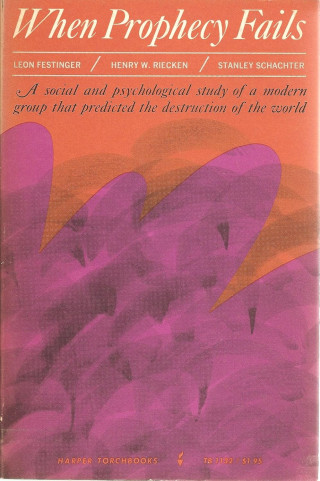Both Prophecy and Festinger’s 1957 followup, A Theory of Cognitive Dissonance, argued that the group employed cognitive dissonance to maintain internal consistency. According to Festinger and his coauthors, Martin and her followers reframed how situations had transpired, made changes and justifications to what they said they believed, and rejected information that didn’t align with their beliefs.
When Kelly looked at Festinger’s 1957 book, though, he felt that the details of the Seekers relayed there didn’t really match what was in Prophecy—that Festinger was, in his words, already “massaging” the facts to make them match his emerging theory of cognitive dissonance. For instance: while Prophecy concedes that a few people walked away from the group after disconfirmation, Festinger’s followup book describes a more total state of belief for everyone involved that grew even stronger after the disappointments of December 1954.
“The conviction of those persons who had met the disconfirmation together did not seem to waver,” Festinger wrote. “Indeed, the need for social support to reduce the dissonance introduced by the disconfirmation was so strong, and the social support so easily forthcoming from one another, that at least two of these persons, who before had occasionally shown some mild skepticism concerning certain aspects of the beliefs, now seemed completely and utterly convinced.”
Festinger’s papers, held at the University of Michigan, were unsealed in early 2025, giving Kelly more insight into the authors’ behavior during their time with the Seekers. Kelly says he was disturbed by what he found, including evidence of clearly unethical intervention and manipulation from the researchers and the observers they hired. He told me that he even found evidence the researchers briefly broke into Dorothy Martin’s house through a back door and looked around, though they found nothing of note; the incident is not mentioned in his published paper.
One focus of Kelly’s paper is Riecken, who immediately acquired a high-level of status in the group—he was even dubbed “Brother Henry”—for reasons that, Kelly writes, weren’t clear. The archival materials, he writes, show that Riecken manipulated his position “to shape group behavior including… pivotal events” in December 1954.
